By Dan Weisz
Remember those little Great Horned Owls in the saguaro cactus nest? My friend and I were watching the last owlet in the saguaro when I turned around to see this Desert Tortoise crossing the road!
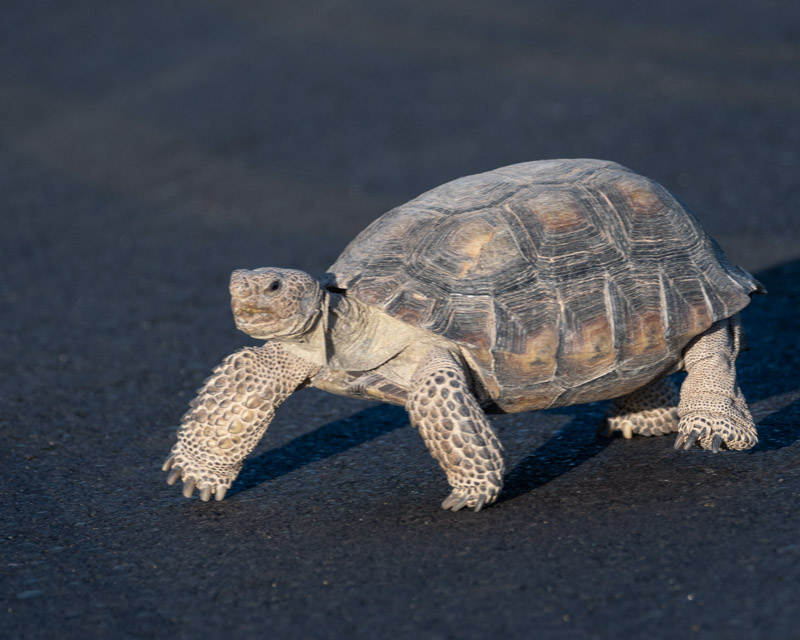
Naturally we stopped shooting the Great Horned Owlet for the opportunity to watch and photograph this rarely seen desert reptile. When we walked back to the tortoise, it acknowledged our presence by stopping in its tracks. It watched us take a wide berth and then settle in down the road with the sun at our backs to await good photo ops. Once the Tortoise decided we were not a threat, it resumed walking at a pretty good clip across the road. It knew where it was going. Why did the Desert Tortoise cross the road?
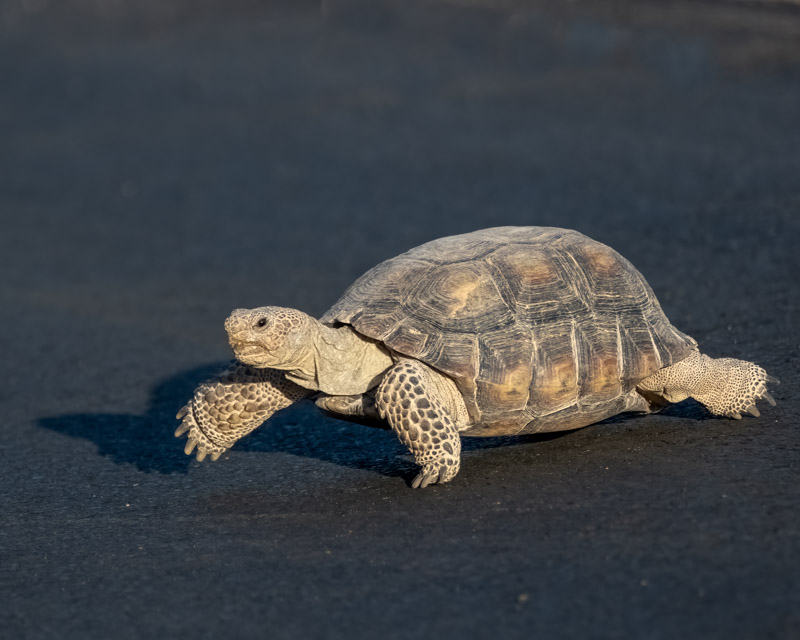
While the tortoise was crossing the road, a Black-throated Sparrow began singing. These desert sparrows have beautiful songs that match their handsome plumage. They always impress me with what looks like very formal wear.
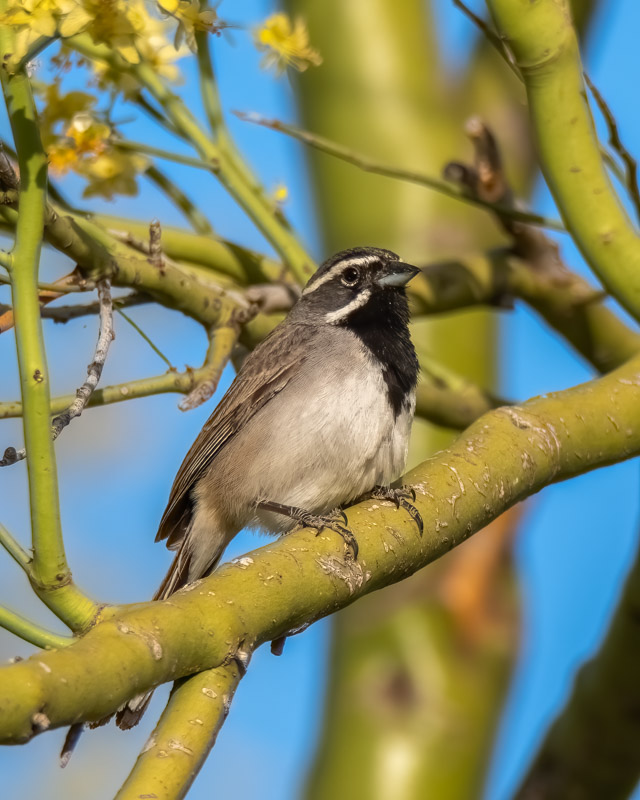
It broke into song quickly and sustained this for quite a while: https://www.allaboutbirds.org/guide/Black-throated_Sparrow/sounds
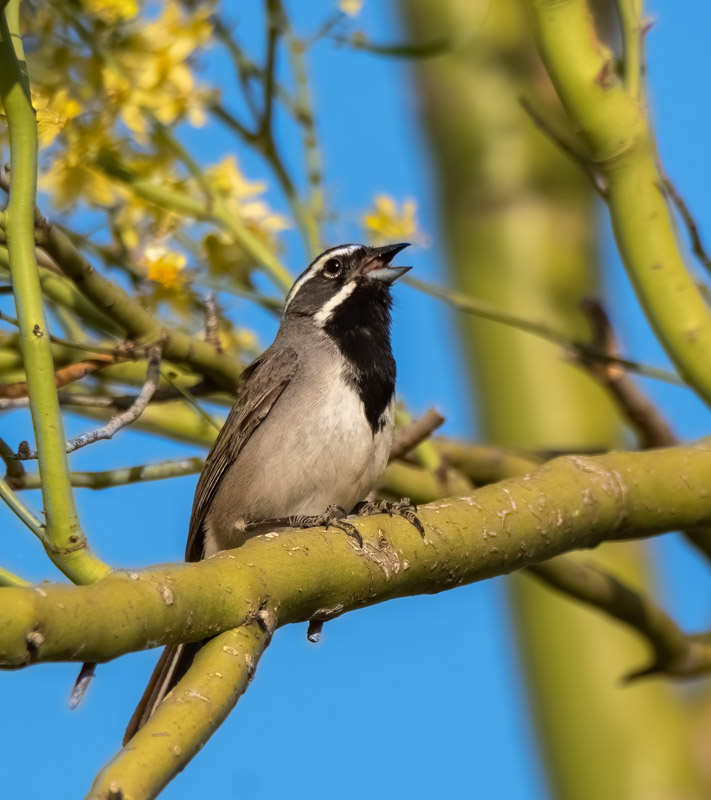
For more on Black-throated Sparrows, listen to Birdnote: https://www.birdnote.org/listen/shows/black-throated-sparrow-sings-desert In the meantime, the Desert Tortoise continued its journey. So why did the Tortoise cross the road? To get to the other side, of course. She looks like she’s practically sprinting in this photo. The Desert Museum has more on Desert Tortoises: https://www.desertmuseum.org/kids/oz/long-fact-sheets/Desert%20Tortoise.php
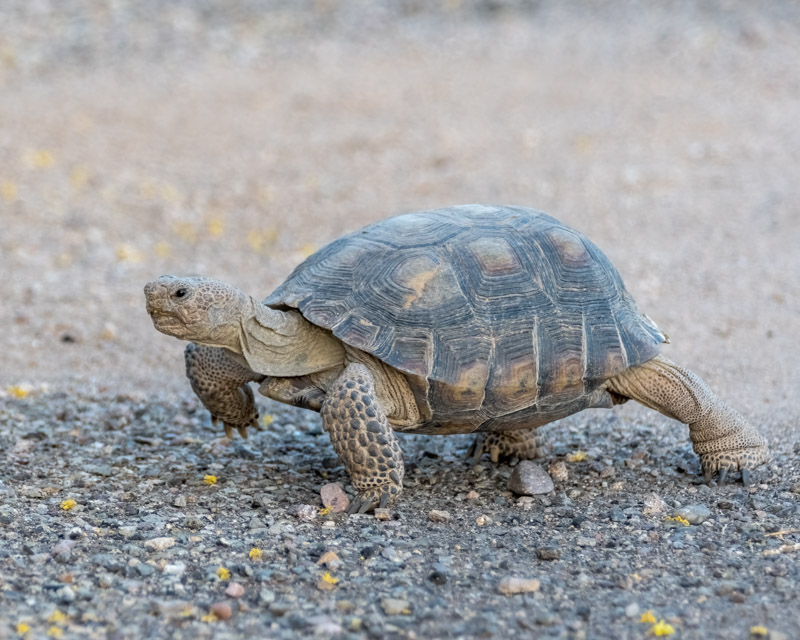
Once the Desert Tortoise crossed the road, it turned and began steadily walking towards us. This shot gives you a clear look at how we determined that this tortoise was a female. Male Desert Tortoises have a feature on the bottom of their shells under their neck called a gular horn. This feature helps them when battling other male tortoises- they will use that feature to lift and flip over the competitor tortoise. The tortoise below does not have an enlarged or upturned gular horn, indicating she is a female. She also had a very small tail which is another telltale sign (literally)! http://tortoisegroup.org/wp-content/uploads/PDFs/sheet2-sexing-copy.pdf
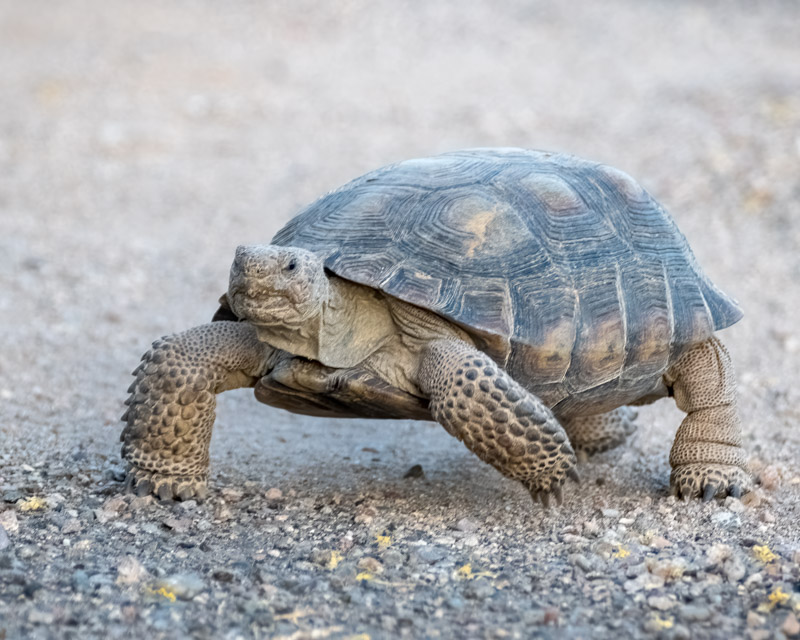
We kind of wondered what this tortoise was thinking as it turned and walked directly towards us. What we learned was that we just happened to be in her predetermined path. After taking a few steps towards us she turned to her right and began walking up the front yard of the house. She crossed their front sidewalk, occasionally stopping to sniff or eat a palo verde blossom, and then continued up towards the front of the house. The tortoise’s legs are flattened in the front and have large scales on them.
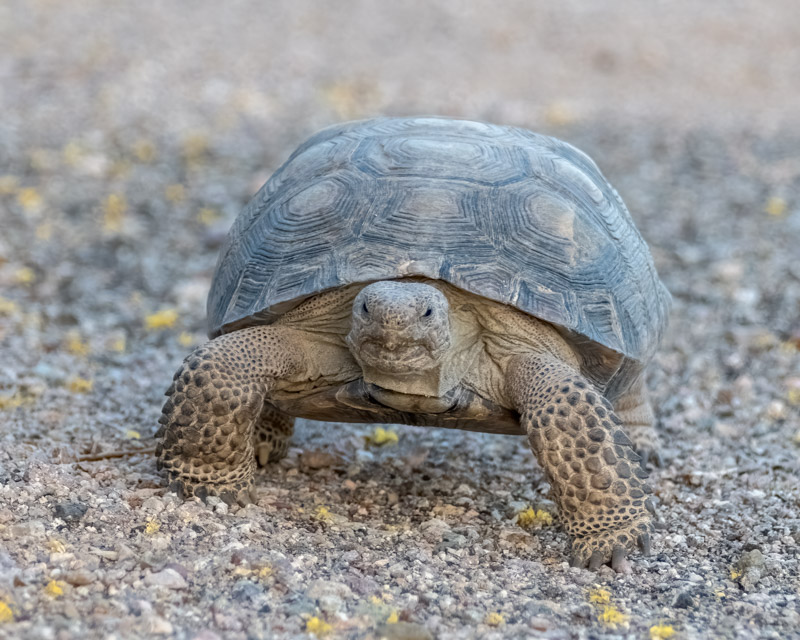
For so many of our area wildlife, living in the desert can be very tough with the limited water available. How do Black-throated Sparrows survive this dry, harsh climate? Birdnote answers that question: https://www.birdnote.org/listen/shows/what-do-desert-birds-drink
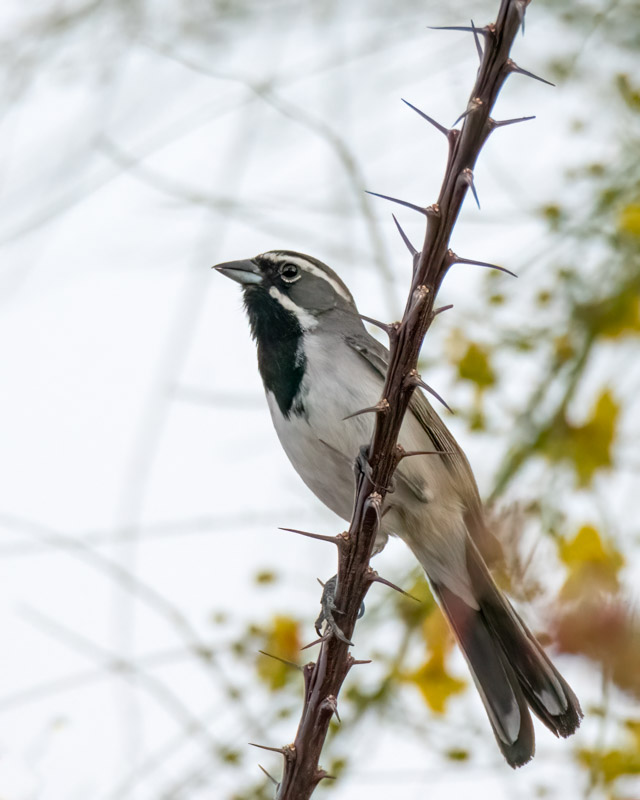
It is fitting that the Black-throated Sparrow moved to this ocotillo. Ocotillo plants have also adapted to our harsh desert environment. When it rains, an ocotillo will leaf out and may even flower. After a few weeks without rain, the plant will drop its leaves and resume its spiky stick/cactus look. Once the next rains arrives, the ocotillo will leaf out once again. I stepped to the side for the photo below in order to take the shot without the palo verde leaves and flowers in the background. https://www.desertmuseum.org/kids/oz/long-fact-sheets/Ocotillo.php
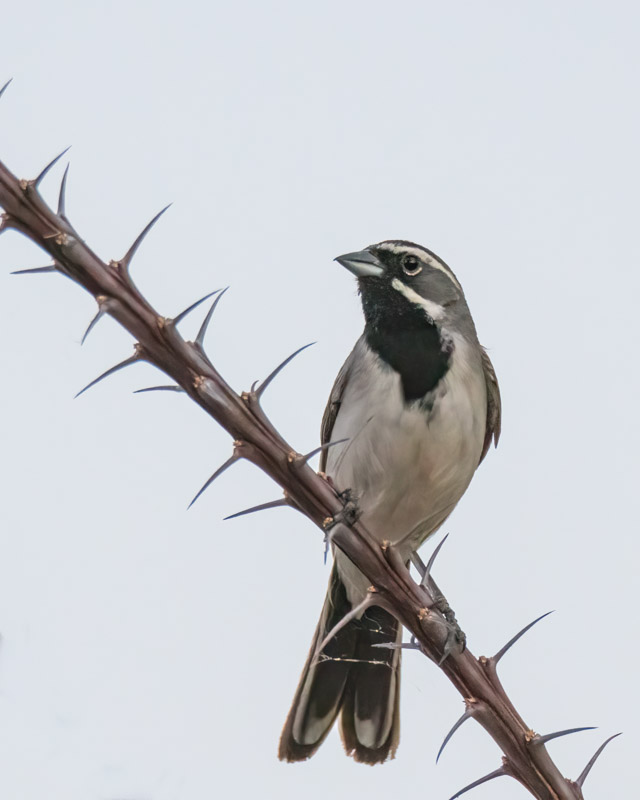
It is interesting to see a small spider web between the thorns of the ocotillo in front of the Sparrow’s tail.
So within seconds, we were watching a Great Horned Owlet in a saguaro nest, its siblings and parent in a mesquite tree across the street, a Desert Tortoise crossing the road, and then were serenaded by a Black-throated Sparrow. This was the Sonoran Desert at its very best!
